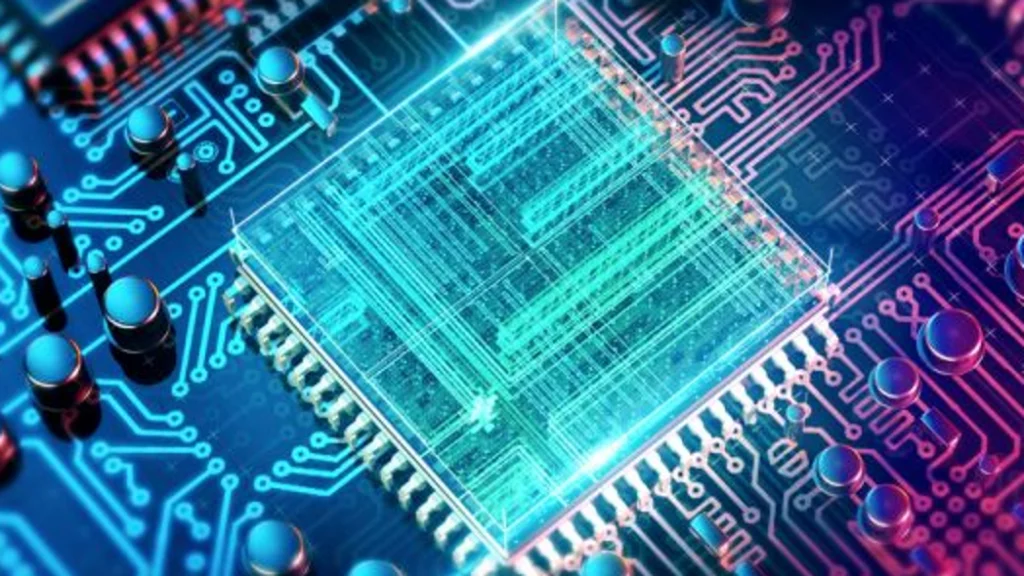The way a CPU works may seem very magical to you , but it is nothing more than the result of decades of engineering. Over time, transistors (basic components of every microchip) have decreased in size, even to microscopic scales. This has caused the manufacturing of processors to become increasingly complicated . They basically go through two processes, which are photolithography and packaging. That although they are a solution for the manufacture of these microchips, it is not totally perfect since they have some problems that we will explain.
Photolithography
Transistors today are so tiny that it is impossible for manufacturers to build them using normal methods . It is true that 3D printers are very precise and can create complex things, but they are not suitable for the nanometer scales for the construction of current chips.
To solve this problem is photolithography, which makes it unnecessary to move complicated high-precision machinery. Basically, it is about using light to burn an image onto the chip . Imagine an old overhead projector, but doing the opposite, i.e. reducing the template to the desired precision.
The image is projected onto a silicon wafer that is machined with very high precision in laboratories, because even a speck of dust on the wafer means thousands of dollars in losses. The wafer is coated with a material called a photoresist, which responds to light and leaves an etching of the CPU that is backfilled with copper to form transistors . This process is repeated many times until the CPU is built, in the same way that a 3D printer builds up layers of plastic.
Disadvantages of nanoscale photolithography
But this process has some problems, as it doesn’t matter if you can make very small transistors if they don’t work. The main drawback in the manufacturing process of photolithography processors has to do with physics. A transistor is supposed to stop the flow of electricity by being off, but they are getting so small that electrons can flow through them . This phenomenon is known as quantum tunneling, and it is a very big problem for silicon engineers.
Defects are one more problem, as photolithography also has a precision limit. It is similar to a blurred image from the projector, it is not as clear when it shrinks. However, this problem is tried to mitigate with the use of “extreme” ultraviolet light . This is a much higher wave than we can perceive, with the use of lasers in a vacuum chamber. However, the problem will continue to exist as long as the size of the transistors is reduced.
Other defects can be mitigated with a process known as binning. This means that if the defect is present in a processor core, the core is disabled and the chip is sold as an “inferior” component . For example, Intel processors are manufactured on a wafer as a 6 core Core i7, if they don’t work as intended they are sold as a Core i5. In case it still doesn’t work to i5 specs it’s sold as a Core i3.
However, if the defect is present in the cache or other critical component , the chip will most likely be scrapped. Since it has much lower performance and more expensive prices. Newer processor cores with 7nm and 10nm have higher defect rates, making them more expensive.
Packaging
Packaging the CPU for the end user is more than just putting it in a box with Styrofoam. When the CPU is finished, it is still useless unless it can be connected to the motherboard. That’s what the “packaging” process is for, which involves attaching the delicate silicon mold to a PCB , what many think of as a CPU.
This process needs quite a bit of precision, although not as much as photolithography. The CPU die is mounted on a silicon board and the electrical connections are attached to all the pins that make contact with the motherboard. Today’s CPUs can have thousands of pins, for example the high-end AMD Thread ripper has 4094 pins .
Because processors generate so much heat, they must also be protected. For this they have a heat diffuser placed in the upper part. This helps heat to be easily transferred to the heatsink that we commonly mount on our CPU .
When the packaging is complete, the processors are packed in their retail boxes, ready to be placed on shelves and installed on a motherboard. Considering how complex processors are to manufacture, it’s pretty impressive that they cost a few hundred dollars.

